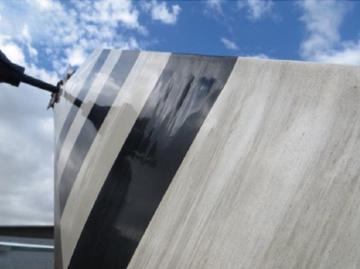Helicopter tail rotor strike highlights importance of maintaining a good reference point in confined areas.

On 23 May 2014, at about 0810 EST, the crew of a Bell 412 helicopter, were tasked by the Queensland Emergency Medical System Coordination Centre (QCC) to conduct a rescue in the Mount Spec area about 72 km WNW of their base in Townsville, Queensland.
Due to the inaccessibility of the area by road and the reported condition of the patient, the crew planned to conduct a winching operation. The crew consisted of a pilot, an air crew officer (ACO), a rescue crew officer (RCO), a paramedic and a doctor.
The pilot established the helicopter in a hover about 100 ft above the ground facing down the slope. The ACO directed the pilot to manoeuvre the helicopter to perform the operation and remain clear of all obstacles. The doctor and RCO were winched down to the site together, and subsequently the paramedic was lowered. The pilot conducted an orbit before returning to winch the stretcher and rescue equipment down.
This incident highlights to helicopter pilots the importance maintaining a good reference point when operating in confined areas.
The pilot and ACO then departed and after about 15 minutes, returned to commence the winch recovery. The ACO directed the pilot to manoeuvre the helicopter and winched up the doctor and the stretcher. The ACO handed the visual reference over to the pilot, while his attention was focused on securing the stretcher inside the cabin.
About 1 minute later, the ACO returned to the door and observed that the helicopter had drifted back and left and he immediately directed the pilot to manoeuvre up and to the right, however the tail rotor collided with some foliage. The ACO advised the pilot. The pilot had not detected any strike, there were no abnormal indications or vibrations, and the helicopter was operating normally.
The RCO and paramedic were then winched into the helicopter and the ACO returned to the front seat. After landing, the pilot observed some ripples on the tail rotor blades.
This incident highlights to helicopter pilots the importance maintaining a good reference point when operating in confined areas and to establish the helicopter into the safest position possible particularly while the other crew members’ attention is focused inside the cabin. It also provides a reminder to clarify understanding between crew members, as in this incident the ACO knew the tail rotor had struck foliage, and the pilot had thought it was the main rotor and based his decisions on that belief.
Read the report: Collision with terrain involving a Bell 412, VH-ESD, 72 km west-north-west of Townsville, Queensland, on 23 May 2014


